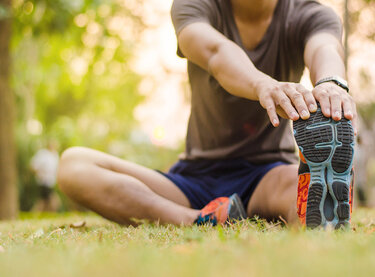Don’t underestimate the importance of flexibility
FLEXIBILITY training is one of the fastest working methods of improving physical fitness, writes Andrew Burns, Lifestyle & Physical Activity Manager at the Mardyke Arena UCC.
The flexibility around a joint is improved immediately after carrying out exercises. You can start to see results after a single bout of flexibility training.
Continuous improvement can be maintained after about four weeks of regular stretching at a frequency no less than 2-3 times per week.
By contrast, aerobic and strength training usually take 6 and 8 weeks of regular training to show a noticeable increase in cardiovascular fitness and/or increased strength.
Benefits of Flexibility Training:
- Improved balance
- Eliminates awkward and inefficient movement
Potential Benefits include:
- Increased resistance to muscle, ligament or tendon injury
- Reduced lower back pain
- Reduced delayed onset muscle soreness (DOMS, or the pains we feel after exercising hard)
The available evidence also suggests that flexibility training integrated with strength training is essential for almost all sports and recreational past times.
Thus, the overall goal should be to achieve strength and flexibility rather than just doing one or the other.
Despite the very quick results, flexibility is also the most under-utilized form of physical activity, despite it being almost universally accessible.
Generally, fitness enthusiasts don’t know they need to be flexible in order to be fit and strong.
From a coach’s point of view, flexibility is often assumed to be OK if a client can do other perhaps more interesting activities such as running, cycling and/or strength training.
To begin incorporating flexibility training into an existing physical activity programme, adding another workout to an already packed schedule is usually unrealistic.
So how do you develop your flexibility? Begin first by warming up. When you are warm your muscles are more pliable and the flexibility exercises are more effective.
Usually, it is convenient to put flexibility exercises within or directly after the cool down.
The type of flexibility exercises one may pursue are listed below:
- Ballistic or bouncing stretches
- Dynamic or slow movement stretching
- Static stretching
- Active static stretching
- Passive static stretching
- Proprioceptive neuromuscular facilitation (PNF)
The type of stretching you choose to undertake will depend on your individual flexibility goal, level of skill, co-ordination personal preference.
You are encouraged to treat each joint differently and it is considered normal to be very flexible in one joint and not quite so flexible in another.
In simple terms, you don’t need to include all of the above, you need to find what method works for you and then incorporate it into your physical activity routine.
To gain a benefit from stretching, hold each flexibility exercise at the point of tightness or slight discomfort for 30-60 seconds.
You may divide this time period up into reps and sets, i.e., 2 x 30 seconds or 4 x 15 seconds, etc.
The point of tightness and discomfort is different for everyone, go as far as you can, be cautious and if in doubt, stop and ask — we’re here to help.


